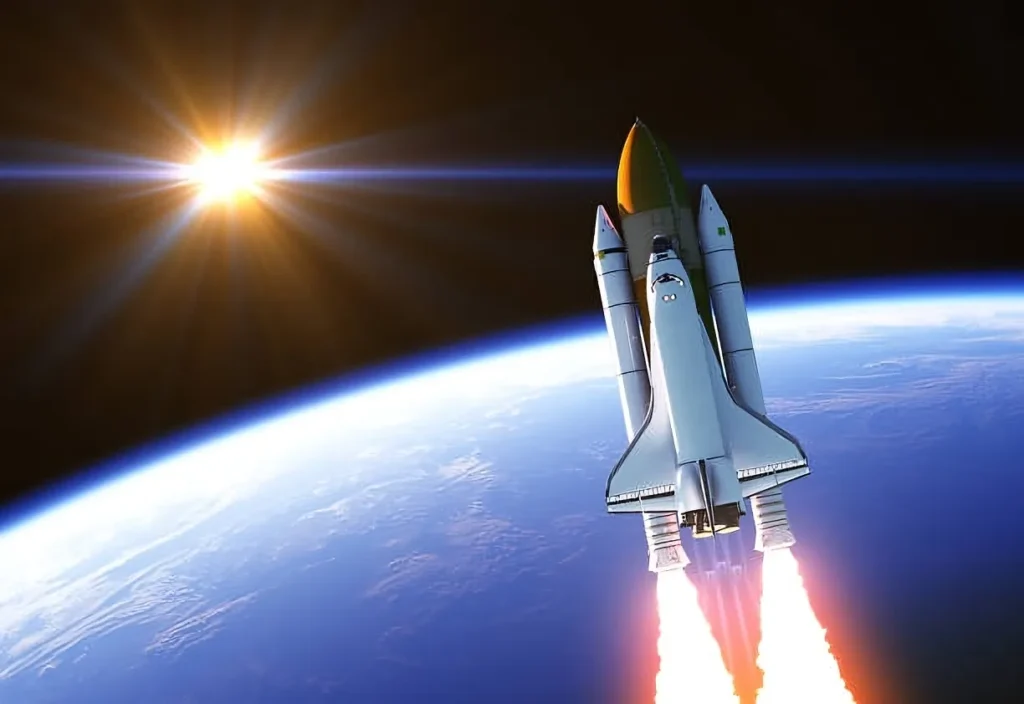Space travel has long been a dream of humanity, and recent developments suggest that it may soon become a reality. The current state of space travel is characterized by a mix of government initiatives and private companies working towards the goal of making space travel more feasible. In 2023, we are closer than ever to achieving this goal.
Recent developments in space technology have made space travel more feasible than ever before. Private companies such as SpaceX, Blue Origin, and Virgin Galactic are leading the way in space travel, while government initiatives such as NASA’s Artemis Program and China’s space exploration plans are driving space travel forward. The future of space tourism is also looking bright, with companies and individuals planning to offer space tourism in the near future.

Advancements in Space Technology: What’s New?
Recent advancements in space technology have made space travel more feasible than ever before. One of the most significant advancements is the development of reusable rockets, which has drastically reduced the cost of space travel. SpaceX’s Falcon 9 rocket, for example, can be reused up to 10 times, significantly reducing the cost of launching payloads into space.
Another significant advancement is the development of new materials that can withstand the harsh conditions of space. For example, NASA has developed a new material called “metallic glass” that is stronger and more durable than traditional metals. This material could be used to build spacecraft that are lighter and more durable than current spacecraft.
Advancements in propulsion technology are also making space travel more feasible. NASA is currently developing a new propulsion system called the “EM drive,” which uses electromagnetic waves to propel a spacecraft. This technology could significantly reduce the travel time to Mars and other planets.
Private Companies Leading the Way: SpaceX, Blue Origin, and Virgin Galactic
Private companies are leading the way in space travel, with SpaceX, Blue Origin, and Virgin Galactic at the forefront. SpaceX, founded by Elon Musk, is currently working on developing a reusable spacecraft called the Starship, which could be used to transport humans to Mars and other planets. Blue Origin, founded by Jeff Bezos, is working on developing a reusable rocket called the New Glenn, which could be used to launch payloads into space. Virgin Galactic, founded by Richard Branson, is working on developing a spacecraft called the SpaceShipTwo, which could be used to transport tourists to space.
These companies are not only focused on space travel but also on developing new technologies that could be used in other industries. For example, SpaceX is developing a satellite internet system called Starlink, which could provide high-speed internet to remote areas of the world.
Government Initiatives: NASA’s Artemis Program and China’s Space Exploration Plans
Government initiatives are also driving space travel forward. NASA’s Artemis Program aims to land the first woman and the next man on the moon by 2024. The program also aims to establish a sustainable presence on the moon by 2028. China’s space exploration plans include a manned mission to Mars by 2033 and the establishment of a permanent space station by 2022.
These initiatives are not only focused on space exploration but also on developing new technologies that could be used in other industries. For example, NASA’s Artemis Program is developing new technologies for sustainable living on the moon, which could be used to develop sustainable living on Earth.
The Future of Space Tourism: Who Will Be the First to Travel to Space?
Space tourism is one of the most exciting prospects of space travel. Several companies and individuals are planning to offer space tourism in the near future, including SpaceX, Blue Origin, and Virgin Galactic. The first space tourists are likely to be wealthy individuals who can afford the high cost of space travel.
However, there are also plans to make space tourism more accessible to the general public. For example, Virgin Galactic plans to offer suborbital flights that would allow passengers to experience weightlessness and see the curvature of the Earth. The cost of these flights is expected to be around $250,000 per person.
Challenges and Risks: Safety Concerns and Environmental Impact
Space travel is not without its challenges and risks. One of the biggest challenges is ensuring the safety of astronauts and passengers. Spacecraft must be designed to withstand the harsh conditions of space, including extreme temperatures, radiation, and microgravity. There is also the risk of equipment failure, which could be catastrophic in space.
Another concern is the environmental impact of space travel. Rockets emit greenhouse gases and other pollutants into the atmosphere, which could contribute to climate change. There is also the risk of space debris, which could pose a threat to other spacecraft and satellites in orbit.
Conclusion: The Exciting Prospects of Space Travel in the Near Future
In conclusion, space travel is becoming a reality in 2021. Recent advancements in space technology, private companies, and government initiatives are driving space travel forward. The future of space tourism is also looking bright, with several companies and individuals planning to offer space tourism in the near future.
However, there are also challenges and risks associated with space travel, including safety concerns and environmental impact. These challenges must be addressed to ensure the long-term sustainability of space travel.
Overall, the prospects of space travel in the near future are exciting. Space travel has the potential to revolutionize industries such as telecommunications, transportation, and energy. It could also lead to new discoveries and advancements in science and technology. The possibilities are endless, and we are only just beginning to explore them.




